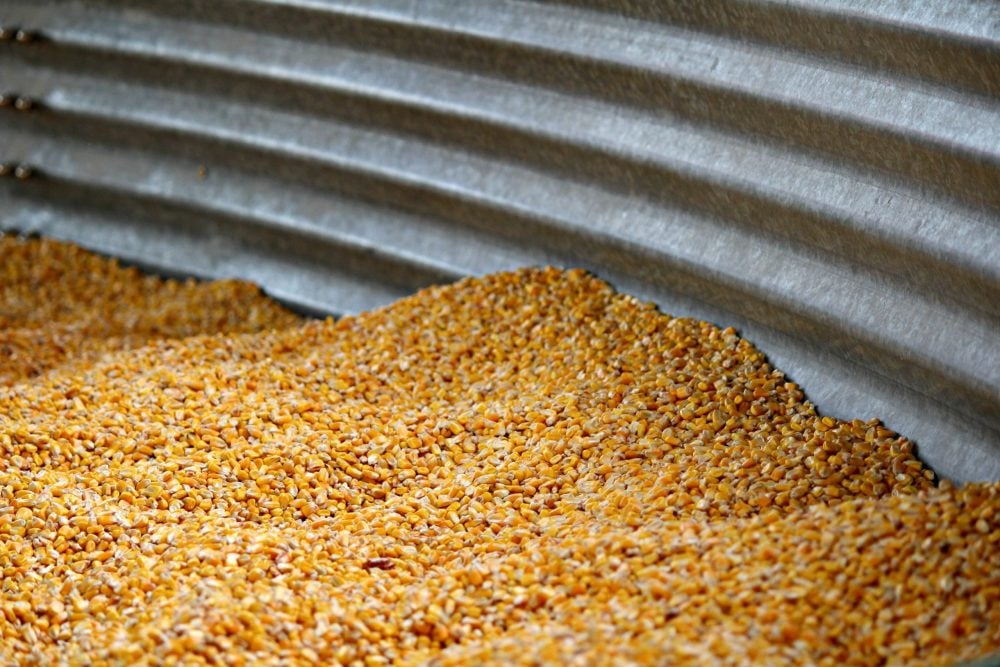The USDA decreased 2024 corn and soybean yields on the January World Agriculture Supply and Demand Estimates (WASDE) Report. Lower Russian wheat exports from Feb. 1 through June 30 will increase world wheat prices.
Quick look:
Soybeans: U.S. farmers are expected to plant less soybeans.
Read Also

Cycle swings dictate farming profitability
It can be profitable to understand where the crop markets are positioned in the context of their big-picture cycles.
Corn: Ending stocks from major exporters will drop below the five-year average.
Wheat: Demand for North American wheat will increase in spring 2025.
Statistics Canada will release its Dec. 31, 2024 Stocks Report on Feb. 7, 2025. Stocks reports are important because they confirm the 2024 production and provide an estimate of feed usage.
Soybeans
The Ontario domestic soybean market is functioning to ration demand away from export channels. Soybean bids from domestic crushers are at a premium to elevators sourcing for offshore movement.
We’re expecting Ontario on-farm soybean stocks to come in at one million tonnes on the Dec. 31 stocks report and drop to bin bottom levels at the end of the 2024/25 crop year. However, regular imports from the U.S. over the next few months will cap the upside potential for Ontario soybean prices.
The soybean market is bracing for Chinese tariffs on U.S. soybeans in retaliation to U.S. tariffs on Chinese products. This will weigh on U.S. prices. Ontario imports of U.S. soybeans in the latter half of the crop year may be larger than earlier anticipated. Apparently, China has been storing up on soybeans in anticipation of a “Trump era”.
At the time of writing this article in mid-January, Brazilian soybeans were offered at US$381/tonne FOB Paranagua while U.S. soybeans were quoted at US$421/tonne FOB. the Gulf. Argentine soybeans were offered at US$435/tonne FOB Rosario. There is no change to Brazilian crop forecasts with most estimates around 169 million tonnes, up from 153 million tonnes last year. Argentina’s output remains at 52 million tonnes which would be a year-over-year increase of 3.8 million tonnes.
The USDA’s final crop survey had the U.S. soybean crop at 118.8 million tonnes, down from the December WASDE report’s 121.4 million tonnes, but up from the year-ago output of 113.3 million tonnes. U.S. on-farm stocks as of Dec. 1 came in at 39.5 million tonnes.
U.S. farmers sold 67 per cent of the crop or 79.4 million tonnes from Sept. 1 through Dec. 1. U.S. stocks are not as burdensome as earlier anticipated. U.S. farmers will decrease soybean acres in 2025 as they anticipate lower prices due to Chinese tariff retaliation.
What to do: We’ve advised farmers to be 60 per cent sold on their 2024 production. We’re taking a “wait and see” approach on potential Trump tariffs and not speculating on trade policy. We’re planning our next sale after the Brazilian harvest as the U.S. soybean market usually experiences a seasonal rally prior to planting.
Corn
Ontario corn stocks as of Dec. 31 are estimated at 3.4 million tonnes and commercial stocks are expected to come in at 3.8 million tonnes. From Jan. 1 through March 31, Ontario corn prices are determined by domestic demand and the market is rather sluggish.
Vessels coming into the St. Lawrence require an “ice premium”. Also, vessels want to be in the Gulf or South America due to favourable weather and high demand. Later in April, ocean freight costs transition and there very good rates from St. Lawrence to Europe. There is a natural trade flow (steel) from northern Europe to the U.S. Great Lakes and vessels return to Europe with grain. If Trump puts tariffs on steel, this will increase freight rates for grains and oilseeds out of the St. Lawrence due to lower vessel traffic.
The Ontario corn market experiences seasonal strong demand from April through June largely due to the increase in off-shore movement. We’re expecting a year-over-year increase in Ontario exports to Europe due to a year-over-year decrease in corn production there.
The USDA’s final crop survey had U.S. corn output at 377.6 million tonnes, down from the December estimate of 384.6 million tonnes. U.S. corn ending stocks are expected to finish near 39 million tonnes, down from the 2023/25 carryout of 45 million tonnes.
The five-year average carryout is also 39 million tonnes. If the carryout is near the five-year average, the market has tendency to trade within the five-year average price range. We can expect the corn futures to rally up to the range of $5.50 to $6.00/bu.
Ending stocks from the major exporters will drop below the five-year average. The market cannot afford a crop problem in North America or prices will rally to historical highs. We expect the futures market to incorporate a risk premium in the spring due to the uncertainty in production.
What to do: We’ve advised farmers to be 50 per cent sold on their 2024 production. We’re planning on making our next recommendation in March or April. We continue to be very bullish on Ontario corn prices.
Wheat
Ontario on-farm stocks as of Dec. 31, 2024 are projected to come in at 425,000 tonnes on StatCan’s stocks report. Given our demand projections, Ontario on-farm and commercial wheat stocks on July 31 will drop to historical low levels which will result in stronger domestic basis levels.
The market will need to ration demand away from export channels and trade at a premium to world values. Strength in old crop values will also pull up new-crop prices and provide a good opportunity for new crop sales.
Ontario farmers planted 1.184 million acres of winter wheat this past fall, up from 1.009 million acres during the fall of 2023. Using a traditional abandonment rate and a five-year average yield of 90 bu./ac., production has production has potential to reach 2.7 million tonnes, up from the 2024 output of 2.4 million tonnes. The market needs to encourage demand during the first half of the 2025/26 crop year.
U.S. farmers planted 6.4 million acres of soft red winter wheat this past fall. Using a traditional abandonment rate and a five-year average yield of 69.4 bu./ac., production has potential to reach 9.3 million tonnes, relatively unchanged from last year.
We’re forecasting a minor increase in export demand for the 2025/26 crop year which will cause U.S. ending stocks to drop to 2.1 million tonnes, down from the 2024/25 ending supplies of 2.9 million tonnes and the five-year average of 2.7 million tonnes. The fundamentals tighten for U.S. soft red winter wheat in the 2025/26 crop year which will enhance demand for Ontario soft red winter wheat.
Russia is the world’s largest wheat exporter and has a large influence on the price structure. Russia capped wheat exports from Feb. 1 through June 30 at 11 million tonnes, down from 29 million tonnes last year. Russia’s winter wheat acreage is expected to be down five per cent this year which will result in lower production for the 2025/26 crop year. This market environment will enhance demand for North American wheat in the spring of 2025.
What to do: The wheat market is expected to rally $1.50-$2.00/bu. in April 2025. This is when we’ll finish old crop sales and start making sales on new crop for fall delivery. The next major rally in the wheat market is expected in late October and November 2025.
-Jerry Klassen is an analyst with Resilient Capital.













